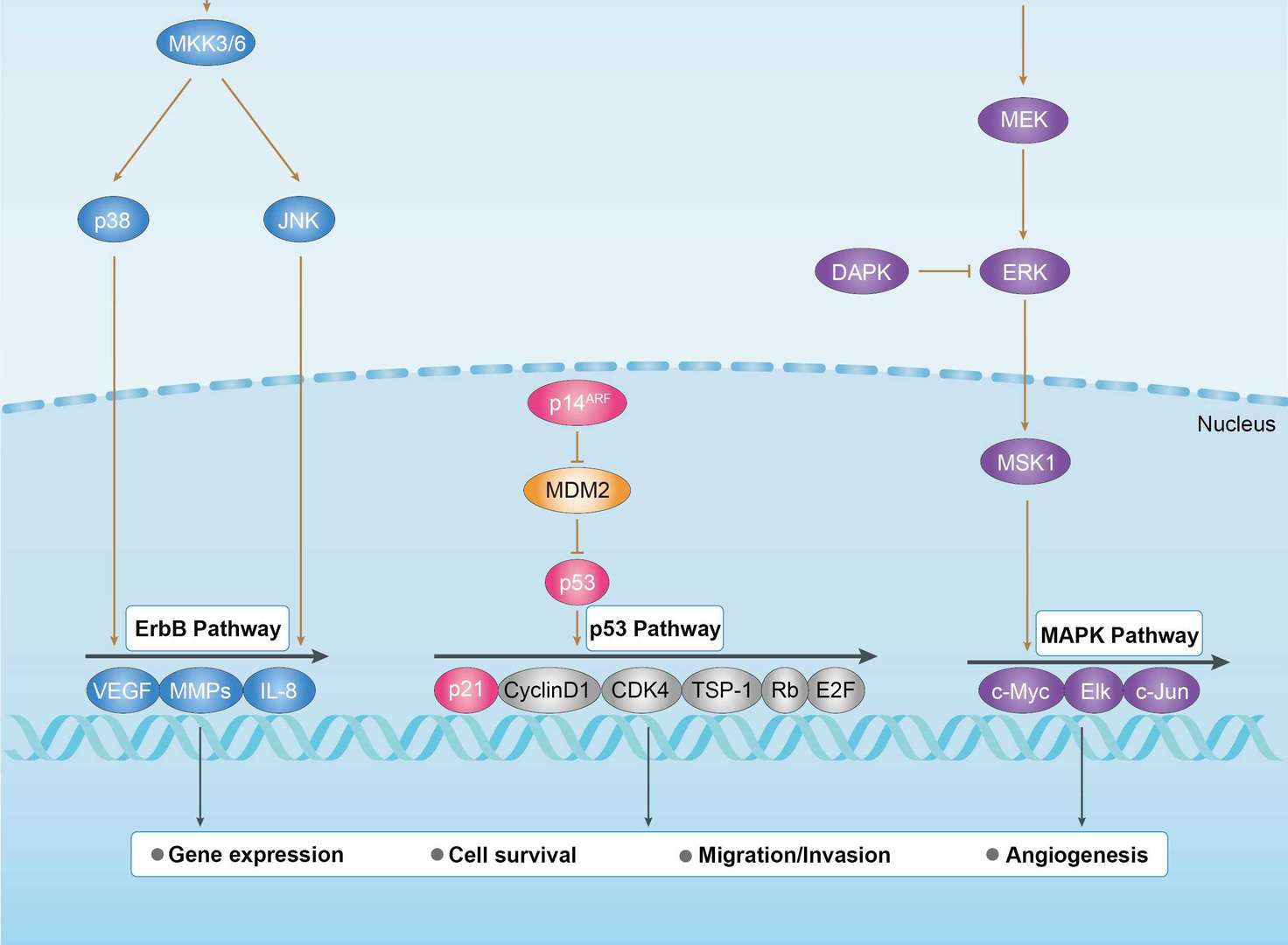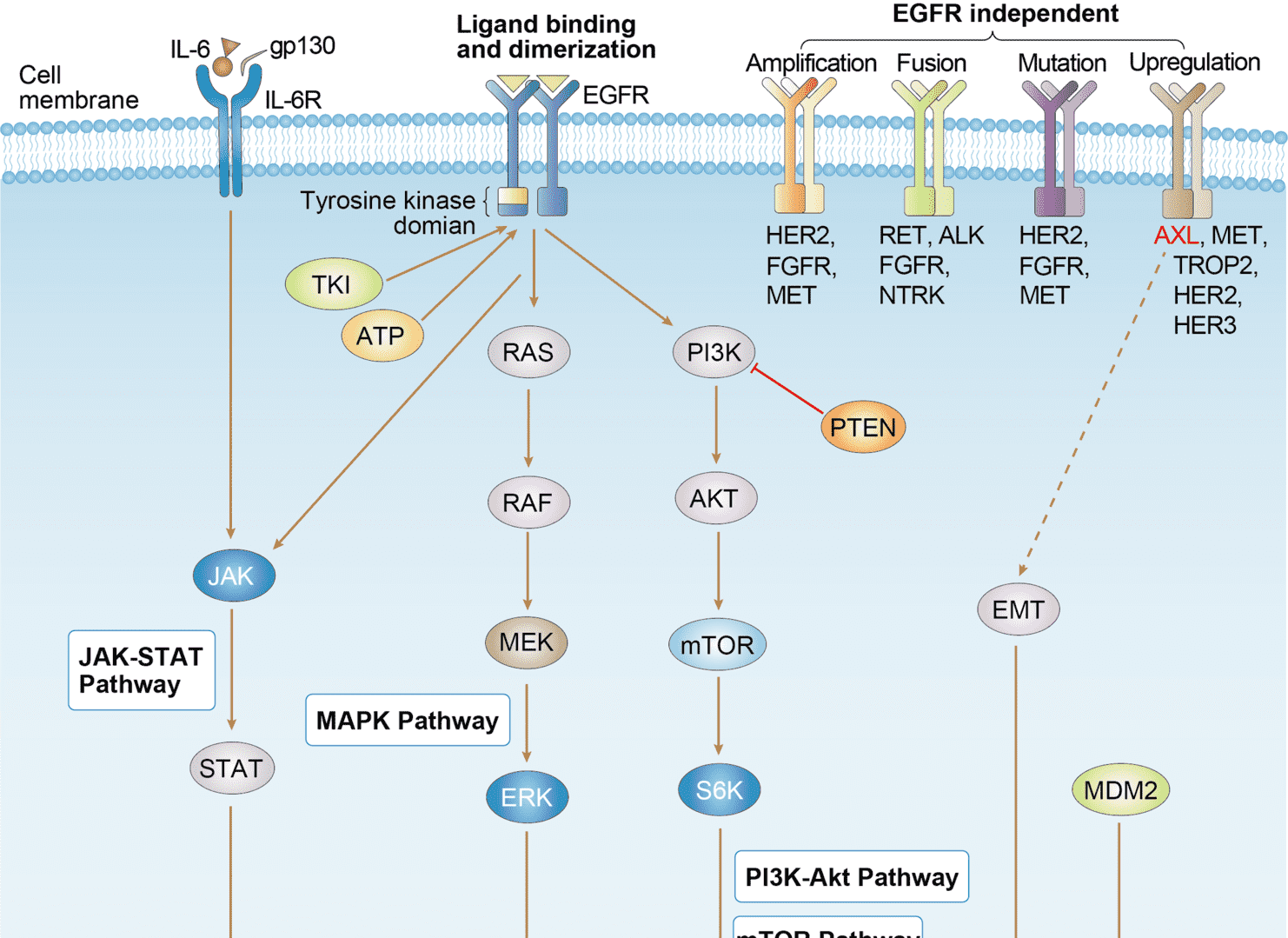Recombinant Anti-FGFR3 (Domain 2 x Domain 3c) Biparatopic Antibody, Tandem scFv (Clone PRO-001 x Clone PRO-055)
CAT#: VS-0525-YC82
The Recombinant Anti-FGFR3 (Domain 2 x Domain 3c) Biparatopic Antibody, Tandem scFv (Clone PRO-001 x Clone PRO-055) is a biparatopic antibody (bpAb) designed for dual epitope binding on FGFR3. Its tandem scFv configuration involves the N-terminal fusion of the PRO-001 scFv (targeting FGFR3 domain 2) to the PRO-055 scFv (specific for FGFR3 domain 3c).






Specifications
- Host Animal 1
- Human
- Host Animal 2
- Human
- Specificity
- Human FGFR3
- Species Reactivity
- Human, Mouse
- Type
- Tandem scFv
- Valency
- 1 + 1
- Clone 1
- PRO-001
- Clone 2
- PRO-055
- Epitope 1
- Domain 2 of FGFR3
- Epitope 2
- Domain 3c of FGFR3
- Purity
- >90%
- Purification
- Affinity purified
- Applications
- FC
- Concentration
- Lot specific
- Buffer
- PBS, pH 7.4
- Preservative
- No preservatives
- Storage
- Store at 4°C for short term. Aliquot and store at -20°C for long term. Avoid freeze-thaw cycles.
- Long Name
- Fibroblast Growth Factor Receptor 3
Target
- Introduction
- This gene encodes a member of the fibroblast growth factor receptor (FGFR) family, with its amino acid sequence being highly conserved between members and among divergent species. FGFR family members differ from one another in their ligand affinities and tissue distribution. A full-length representative protein would consist of an extracellular region, composed of three immunoglobulin-like domains, a single hydrophobic membrane-spanning segment and a cytoplasmic tyrosine kinase domain. The extracellular portion of the protein interacts with fibroblast growth factors, setting in motion a cascade of downstream signals, ultimately influencing mitogenesis and differentiation. This particular family member binds acidic and basic fibroblast growth hormone and plays a role in bone development and maintenance. Mutations in this gene lead to craniosynostosis and multiple types of skeletal dysplasia. Three alternatively spliced transcript variants that encode different protein isoforms have been described.
- Alternative Names
- Fibroblast Growth Factor Receptor 3; EC 2.7.10.1; FGFR-3; JTK4; Fibroblast Growth Factor Receptor 3 Variant 4; Achondroplasia, Thanatophoric Dwarfism; Hydroxyaryl-Protein Kinase; Tyrosine Kinase JTK4; CD333 Antigen; HSFGFR3EX; EC 2.7.10; CD333; CEK2; ACH
- Gene ID
- 2261
- UniProt ID
- P22607
Customer Review
There are currently no Customer reviews or questions for VS-0525-YC82. Click the button above to contact us or submit your feedback about this product.
Submit Your Publication
Published with our product? Submit your paper and receive a 10% discount on your next order! Share your research to earn exclusive rewards.
Related Diseases
Downloadable Resources
Download resources about recombinant antibody development and antibody engineering to boost your research.
Datasheet
MSDS
COA
Certificate of Analysis LookupTo download a Certificate of Analysis, please enter a lot number in the search box below. Note: Certificate of Analysis not available for kit components.
See other products for "FGFR3"
Select a product category from the dropdown menu below to view related products.
| CAT | Product Name | Application | Type |
|---|---|---|---|
| MOB-1249z | Mouse Anti-FGFR3 Recombinant Antibody (clone 3F6) | WB, ELISA, FC | Mouse IgG2a |
| PABL-095 | Human Anti-FGFR3 Recombinant Antibody (clone 2B.1.3) | ELISA, WB, IF, FuncS | Human IgG |
| MOB-0738CT | Recombinant Mouse anti-Human FGFR3 Monoclonal antibody (NN0380-7H22) | IHC-P, WB | |
| VS3-XY705 | Mouse Anti-FGFR3 Recombinant Antibody (clone 2H2C4) | ELISA, WB | Mouse IgG2a |
| VS3-XY706 | Mouse Anti-FGFR3 Recombinant Antibody (clone 4B6G10) | ELISA, WB, IHC, FC | Mouse IgG1 |
| CAT | Product Name | Application | Type |
|---|---|---|---|
| AGTO-G028E | Anti-FGFR3 immunotoxin (scFv)-PE | Cytotoxicity assay, Function study | |
| AGTO-G028G | Anti-FGFR3 immunotoxin (scFv)-Gel | Cytotoxicity assay, Function study | |
| AGTO-L016E | aFGF-PE immunotoxin | Cytotoxicity assay, Functional assay | |
| AGTO-L016G | aFGF-Gel immunotoxin | Cytotoxicity assay, Functional assay |
| CAT | Product Name | Application | Type |
|---|---|---|---|
| PFBL-471 | Human Anti-FGFR3 Recombinant Antibody (clone R3Mab); Fab Fragment | ELISA | Human Fab |
| HPAB-0150-WJ-F(E) | Human Anti-FGFR3 Recombinant Antibody; Fab Fragment (HPAB-0150-WJ-F(E)) | ELISA | Human Fab |
| HPAB-AP654-YC-F(E) | Human Anti-FGFR3 Recombinant Antibody; Fab Fragment (HPAB-AP654-YC-F(E)) | ELISA, Inhib, FuncS | Human Fab |
| HPAB-AP655-YC-F(E) | Human Anti-FGFR3 Recombinant Antibody; Fab Fragment (HPAB-AP655-YC-F(E)) | ELISA, Inhib, FuncS | Human Fab |
| HPAB-AP656-YC-F(E) | Human Anti-FGFR3 Recombinant Antibody; Fab Fragment (HPAB-AP656-YC-F(E)) | ELISA, Inhib, FuncS | Human Fab |
| CAT | Product Name | Application | Type |
|---|---|---|---|
| PSBL-471 | Human Anti-FGFR3 Recombinant Antibody (clone R3Mab); scFv Fragment | ELISA | Human scFv |
| HPAB-0150-WJ-S(P) | Human Anti-FGFR3 Recombinant Antibody; scFv Fragment (HPAB-0150-WJ-S(P)) | ELISA | Human scFv |
| HPAB-AP654-YC-S(P) | Human Anti-FGFR3 Recombinant Antibody; scFv Fragment (HPAB-AP654-YC-S(P)) | ELISA, Inhib, FuncS | Human scFv |
| HPAB-AP655-YC-S(P) | Human Anti-FGFR3 Recombinant Antibody; scFv Fragment (HPAB-AP655-YC-S(P)) | ELISA, Inhib, FuncS | Human scFv |
| HPAB-AP656-YC-S(P) | Human Anti-FGFR3 Recombinant Antibody; scFv Fragment (HPAB-AP656-YC-S(P)) | ELISA, Inhib, FuncS | Human scFv |
| CAT | Product Name | Application | Type |
|---|---|---|---|
| TAB-062WM | Mouse Anti-FGFR3 Recombinant Antibody (TAB-062WM) | ELISA, FC, Neut, WB | Mouse IgG |
| TAB-063WM | Mouse Anti-FGFR3 Recombinant Antibody (TAB-063WM) | ELISA, FC, Neut, WB | Mouse IgG |
| TAB-062WM-S(P) | Mouse Anti-FGFR3 Recombinant Antibody; scFv Fragment (TAB-062WM-S(P)) | ELISA, FC, Neut, WB | Mouse scFv |
| TAB-063WM-S(P) | Mouse Anti-FGFR3 Recombinant Antibody; scFv Fragment (TAB-063WM-S(P)) | ELISA, FC, Neut, WB | Mouse scFv |
| TAB-064WM-S(P) | Anti-Human FGFR3 Recombinant Antibody scFv Fragment (15D8) | Neut, ELISA |
| CAT | Product Name | Application | Type |
|---|---|---|---|
| NEUT-834CQ | Mouse Anti-FGFR3 Recombinant Antibody (clone CBL546) | Neut | Mouse IgG1 |
| NEUT-835CQ | Mouse Anti-FGFR3 Recombinant Antibody (clone CBL547) | WB, Neut | Mouse IgG1 |
| NEUT-836CQ | Mouse Anti-FGFR3 Recombinant Antibody (clone 6G11) | WB, Neut | Mouse IgG1 |
| NEUT-837CQ | Mouse Anti-FGFR3 Recombinant Antibody (clone CBL061) | WB, IHC, Neut | Mouse IgG1 |
| NEUT-838CQ | Rat Anti-Fgfr3 Recombinant Antibody (clone CBL548) | Neut | Rat IgG2a |
| CAT | Product Name | Application | Type |
|---|---|---|---|
| MOR-1299 | Hi-Affi™ Rabbit Anti-FGFR3 Recombinant Antibody (clone DS1299AB) | WB, IHC, ICC, FC | Rabbit IgG |
| CAT | Product Name | Application | Type |
|---|---|---|---|
| VS-0325-XY838 | Anti-FGFR3 Immunohistochemistry Kit | IHC | |
| VS-0525-XY2544 | Anti-Mouse FGFR3 Immunohistochemistry Kit | IHC | |
| VS-0525-XY2543 | Anti-Human FGFR3 Immunohistochemistry Kit | IHC |
| CAT | Product Name | Application | Type |
|---|---|---|---|
| VS-0425-YC387 | Recombinant Anti-FGFR3 Vesicular Antibody, EV Displayed (VS-0425-YC387) | ELISA, FC, Neut, Cell-uptake |
Popular Products

Application: Neut, ELISA, IF, IP, FuncS, FC, IHC

Application: ELISA, FC, IP, FuncS, IF, Neut, ICC

Application: ELISA, Neut, IF, IP, FC, FuncS

Application: ELISA, FC, IP, FuncS, IF, Neut, ICC

Application: ELISA, FC, IP, FuncS, IF, Neut, ICC

Application: WB, ELISA, Neut, FuncS

Application: Neut, FC, IHC-Fr, IP, BA
-2.png)
Application: ELISA

Application: ELISA, WB

Application: ELISA, WB
For research use only. Not intended for any clinical use. No products from Creative Biolabs may be resold, modified for resale or used to manufacture commercial products without prior written approval from Creative Biolabs.
This site is protected by reCAPTCHA and the Google Privacy Policy and Terms of Service apply.









 Bladder Cancer
Bladder Cancer
 EGFR Tyrosine Kinase Inhibitor Resistance
EGFR Tyrosine Kinase Inhibitor Resistance













